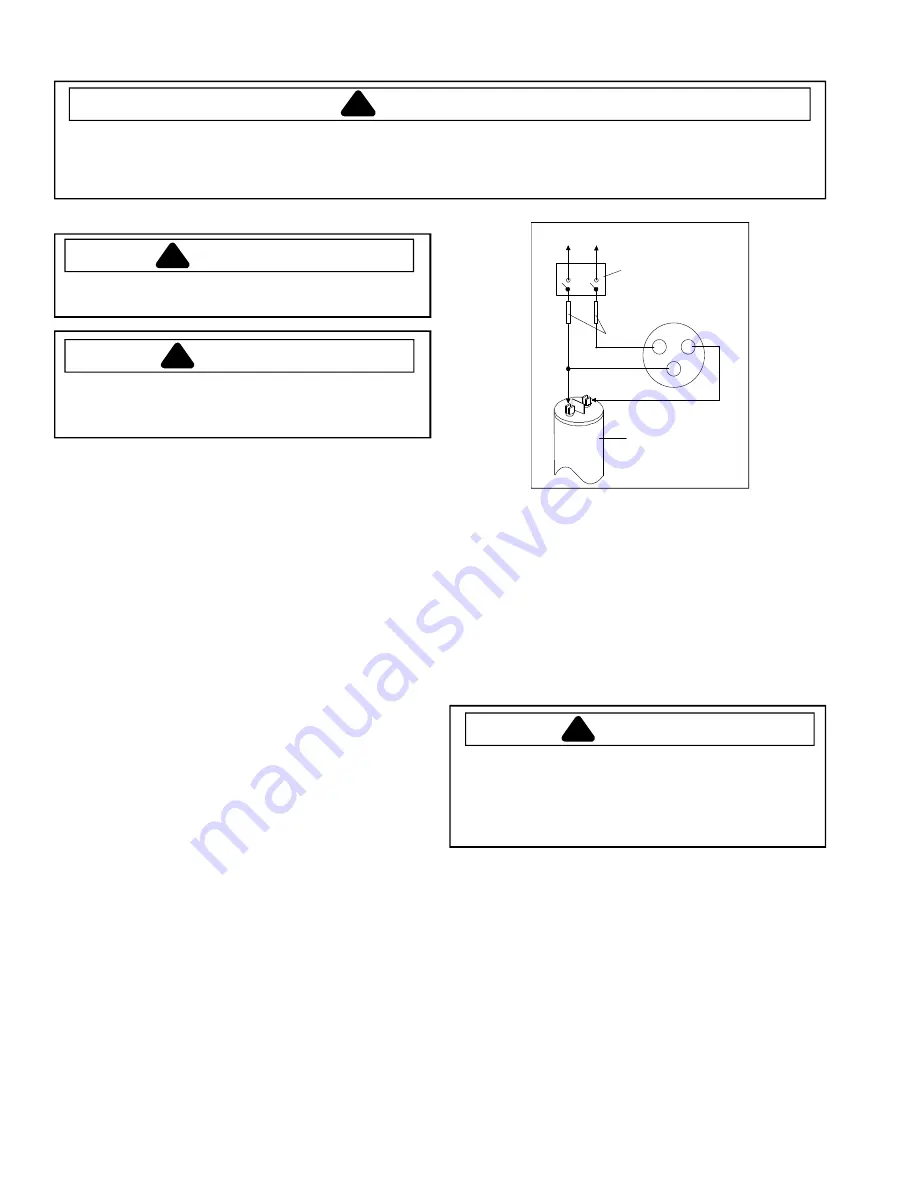
RS5280001 Rev. 0
30
Refrigerant Precautions
WARNING
!
To avoid personal injury, do not allow refrigerant to
contact eyes or skin.
CAUTION
!
To avoid risk of property damage, do not use
refrigerant other than that shown on unit serial
number identification plate.
NOTE
: All precautionary measures recommended by
refrigerant manufacturers and suppliers apply
and should be observed.
Line Piercing Valves
Line piercing valves can be used for diagnosis, but
are not suitable for evacuating or charging due to
holes pierced in tubing by valves.
NOTE
: Do not leave line piercing valves on system.
Connection between valve and tubing is not
hermetically sealed. Leaks will occur.
Open Lines
During any processing of refrigeration system, never
leave lines open to atmosphere. Open lines allow water
vapor to enter system, making proper evacuation more
difficult.
Compressor Operational Test
(short term testing only)
If compressor voltage, capacitor, overload, and motor
winding tests are successful (do not indicate a fault),
perform the following test:
1.
Disconnect power to unit.
2.
Discharge capacitor by shorting capacitor
terminals through a resistor.
NOTE:
Not all units have run capacitor.
3.
Remove leads from compressor terminals.
4.
Attach test cord to compressor windings.
•
Common lead on test cord attaches to C
terminal on compressor.
•
Start lead on test cord attaches to S terminal
on compressor.
•
Run lead on test cord attaches to M terminal
on compressor.
Service Procedures
C
R
S
Fuses
Capacitor
Compressor
Switch
To AC supply
Attaching Capacitor for Compressor Test
5. Connect a known good capacitor into circuit as shown
above. For proper capacitor size and rating, see
technical data sheet for unit under test.
NOTE:
Ensure test cord cables and fuses meet
specifications for unit under test (see Technical
Sheet for unit under test).
6. Replace compressor protector cover securely.
7. Plug test cord into outlet, then press and release start
cord switch.
CAUTION
!
To avoid damage to compressor windings,
immediately disconnect (unplug) test cord from power
source if compressor does not start. Damage to
compressor windings occurs if windings remain
energized when compressor is not running.
If compressor runs when direct wired, it is working
properly. Malfunction is elsewhere in system.
If compressor does not start when direct wired, recover
system at high side. After the system is recovered,
repeat compressor direct wire test.
If compressor runs after system is recovered (but
would not operate when wired direct before recovery) a
restriction in sealed system is indicated.
If motor does not run when wired direct after recovery,
replace faulty compressor.
To avoid risk of electrical shock, personal injury, or death, disconnect electrical power source to unit, unless test
procedures require power to be connected. Discharge capacitor through a 10,000 ohm resistor before attempting
to service. Ensure all earthing wires are connected before certifying unit as repaired and/or operational.
!
WARNING
















































